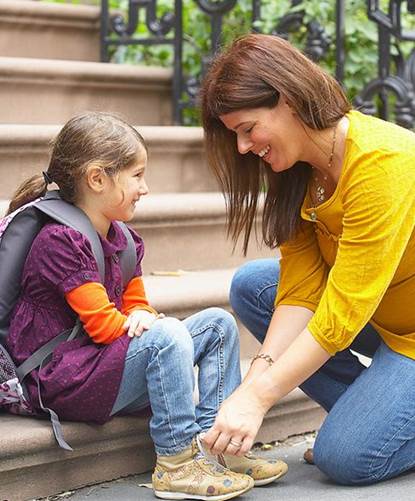An empathetic child might be said to have a big heart, but
he or she is more likely to have a healthier one, too. A University of British
Columbia study found that high school students who spent one hour a week
helping younger students in local after-school programs had lower levels of inflammation
and cholesterol and lower BMIs after 10 weeks than those students who hadn’t
started helping out yet.
“The volunteers who reported the greatest increases in
empathy and altruistic behavior were the ones who also saw the greatest
improvements in their cardiovascular health,” says study researcher Hannah
Schreier.

Train them to care
What you can do
“Empathy is a capacity to think beyond our own needs and
feelings,” says Little. “Empathetic children are liked by their peers because
they’re less likely to bully or hurt others. They’re also more likely to feel
good about themselves.”
How can we best develop empathy in our children? “Start by
talking to them about how other people might feel,” suggests Little. “For
example, explain, ‘When Laura didn’t get a turn batting, she felt like no-one
liked her.’ Also, notice how your child is feeling and comment on why they
might be feeling this way. This helps them to better understand their own
emotions and those of others.
“Empathetic kids have also been taught to apologize when
they’ve done the wrong thing and shown how to praise others’ success,” she
adds.
Help them cope with stress
Our first instinct might be to shield our kids from
stressful situations, but not teaching resilience can be detrimental to their
wellbeing. A recent study found children who avoided stressful situations, like
making a speech, were even more anxious a year later compared to those who had
faced their fears.
Being resilient could also help keep their weight in check.
A study published in the journal Appetite found children who react poorly to
stress have higher BMIs and tend to eat when not hungry compared to children
who don’t get as frazzled.

Our first instinct
might be to shield our kids from stressful situations, but not teaching
resilience can be detrimental to their wellbeing.
What you can do
“Instead of telling your children what to do, show them what
they can do,” says Little. “Many children aren’t taught to problem-solve
because we tend to fi x things for them. But if they can look at a problem and
generate a few options about what they can try, then they’ll feel more in
control.”
“Children have an amazing ability to magnify a little
problem into an enormous one and react accordingly,” says Little. “Show your
child how to break a problem down into manageable parts, then encourage them to
have a go – it doesn’t have to be the perfect solution – and see what works for
them,” she adds.
And don’t forget to be serious about sleep
Setting a bedtime routine, and sticking to it, teaches
children the value of getting a good night’s sleep. Bad sleeping habits have
been linked to a greater risk of high cholesterol and blood pressure in teens,
along with greater increases in their BMIs. Children need 10 hours and teens no
less than eight hours’ sleep a night, with computers and phones turned off at
least an hour before lights out to help their bodies wind down properly.

Setting a bedtime
routine, and sticking to it, teaches children the value of getting a good
night’s sleep.